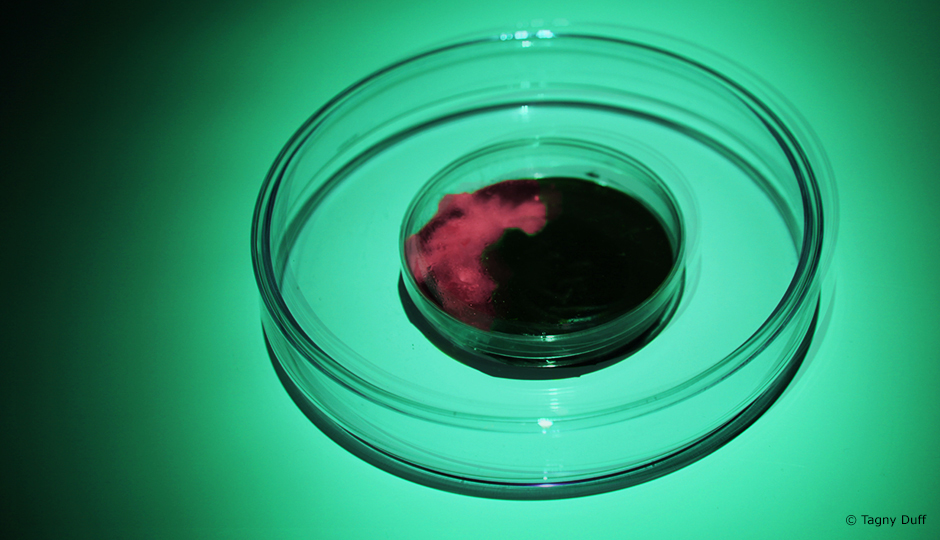Our relationship with microbes and viruses is in a state of change. While they are generally considered to be dangerous adversaries that must be combatted, they can also be formidable allies. For example, viruses are used to deliver drugs to target cells within the patient’s body, and microorganisms are used to remove pollutants from the soil and decontaminate rivers after oil spills (bioremediation).
Duff cultivated cells containing a deactivated strain of HIV and mycelium on sculptures.
Concordia University communications researcher Tagny Duff is exploring this relationship with BioreMEDIAtion, a research-creation project that lies at the intersection of art and the life sciences and seeks to expand our relationship with the microscopic living world through art.
While working in a laboratory at the University of Lisbon, Duff cultivated viral cells containing a deactivated strain of human immunodeficiency virus (HIV) and mycelium (the vegetative part of a fungus) on sculptures in the form of science equipment composed of agar-agar, a gelling agent obtained from algae. Her project aimed to explore how bioremediation can lead to the creation of new bio-plastics and tools used in the arts and sciences. This exercise also serves to challenge our notions of cleanliness, sterility and disease.
This work is helping to examine the evolution of the representation and understanding of life processes and systems in art and science. It has contributed to the creation of a wet lab for artists, scholars and social sciences researchers working on biological systems at Fluxmedia, a research-creation network founded by Tagny Duff and located at Concordia University’s Milieux Institute for Arts, Culture and Technology.

Artist researcher: Tagny Duff
Medium: Biological sculpture and installation
Materials: Fixed HeLa Cells, mycellium and agar
Photo credit: Tagny Duff




